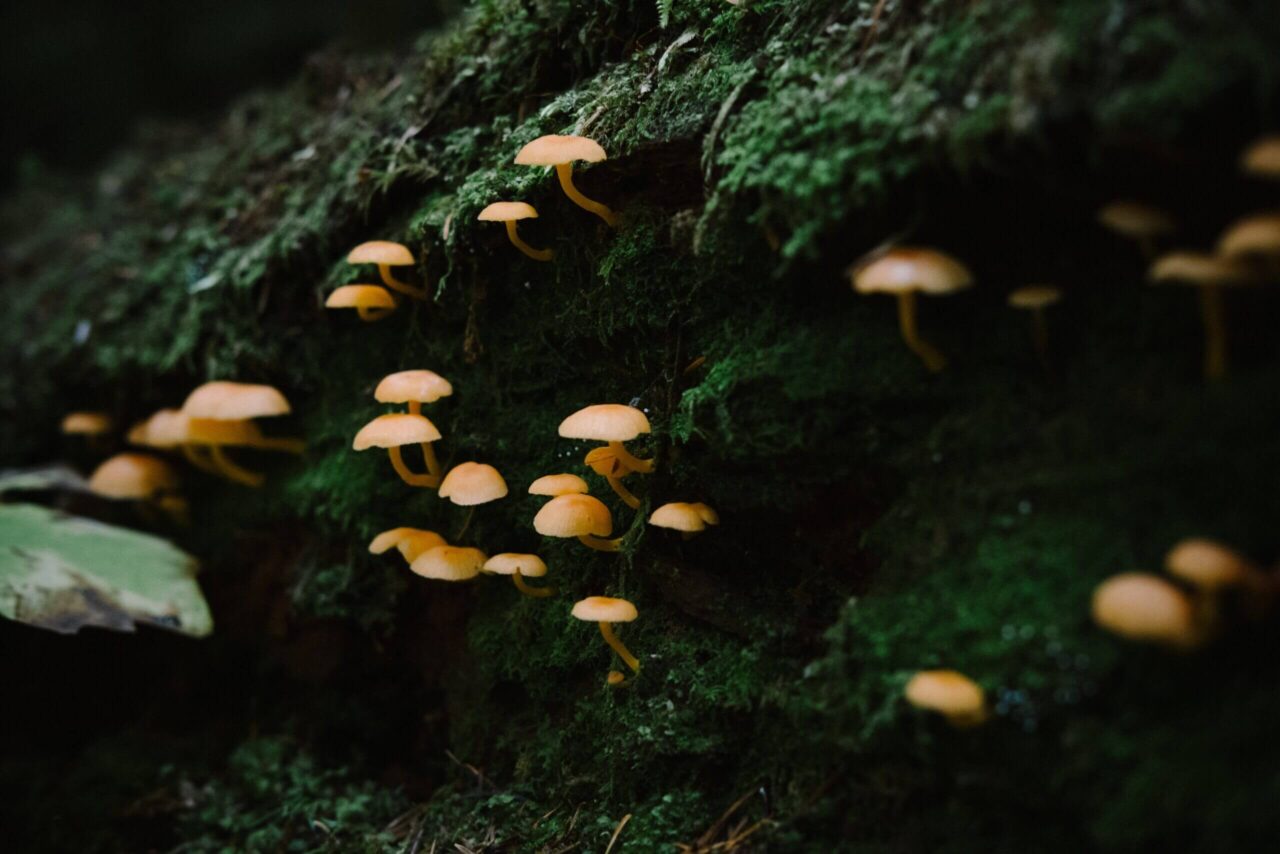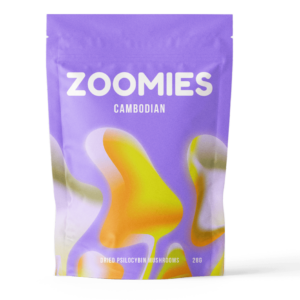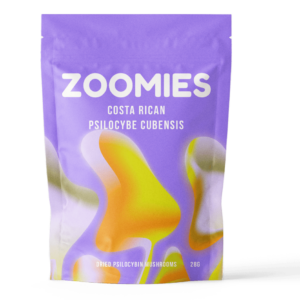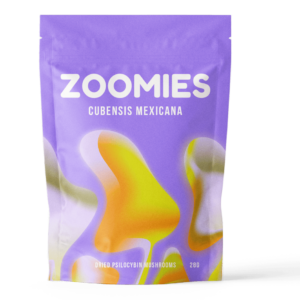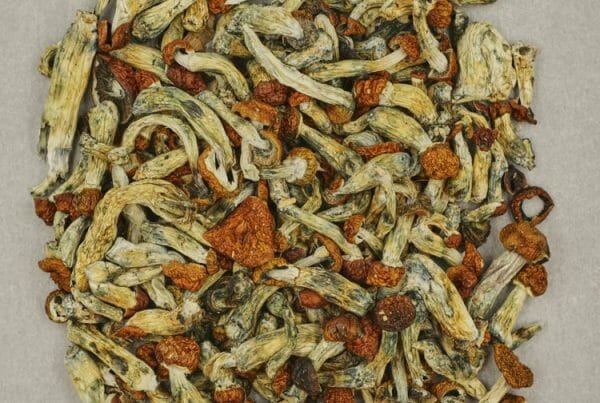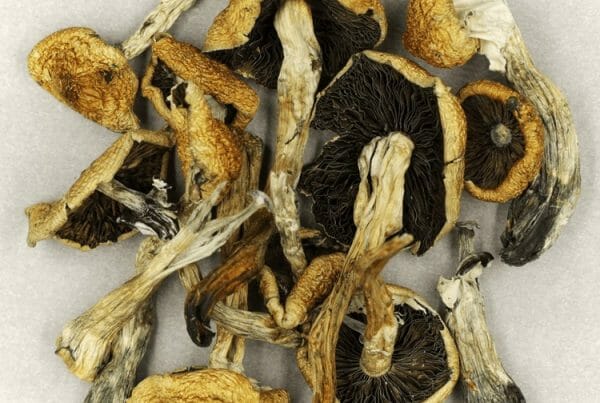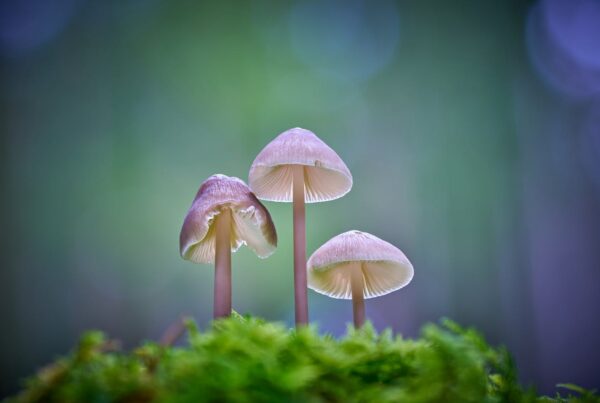With hundreds of varieties of magic mushrooms spread throughout the world and the fact that some look-alikes are toxic, you must be able to know exactly what you’re looking at. We understand that the lure of hunting for fresh magic mushrooms is strong, so we’re here to bring you the knowledge and keep you safe.
Zoomies want you to be informed when identifying species, especially some of the most popular types of magic mushrooms. By learning these varieties you can forage with the assurance that the mushroom you pick is a safe variety. This is important as the consequences of ingesting a toxic variety of mushrooms vary from gastrointestinal discomfort to something far worse. If you are not sure what variety of magic mushroom you are picking, then stick to ordering your supply from professional growers and harvesters.
Table of Contents
Your Guide to Some Popular Magic Mushrooms
Zoomies want you to have a safe psychedelic trip not a trip to the emergency ward. One way is for us to provide this guide for you to use. We also want you to know that you can contact us any time for further information.
Psilocybin Mushrooms
This most popular kind of magic mushroom contains the psychoactive compound psilocybin (its namesake). Psilocybin is found in more than 200 species of mushrooms.
The most potent psilocybin mushroom belongs to the genus Psilocybe. They grow around the world, particularly in Mesoamerica, where they have been used for religious and healing purposes.
A Few Popular Magic Mushrooms
Psilocybe azurescens (common name: “flying saucer mushroom”): Azurescens is an extremely potent species of magic mushroom. Widely believed to grow naturally in a small area on the West Coast of the United States. It is cultivated in many other countries around the globe. When well hydrated, these mushrooms also take on a caramel or chestnut brown colour. Mature mushrooms may display dark bluish to almost blackish hues. One of the wood-chip-pile-loving species, it has spread to other countries due to the timber industry. They also thrive in coastal areas around dune grasses.
Psilocybe baeocystis (common names: “bottle caps,” “knobby tops,” “bluebells,” and “olive caps”): Baeocystis is found in the Pacific Northwest of the United States. Their caps are medium-sized (15 to 55mm in diameter). They have a unique olive brown tone, sometimes with blue tinges. The stems are chalk white and either straight or slightly curved. They bruise easily, displaying a blue colour in the area affected.
Psilocybe cubensis (common name: “golden teacher”): Previously known as Stropharia cubensis, it is the most popular of the magic mushrooms. It is quite common to find it growing across the southeastern United States, Central America, northern parts of South America, and Southeast Asia. Their large golden-coloured caps range from 20 to 80mm in diameter. The caps flatten out and become more umbrella-like when mature and turn more of a cinnamon colour. They have closely spaced gills under the caps that become a darker gray to black when mature.
 Cambodian
Cambodian
From $20.00
 Costa Rican
Costa Rican
From $20.00
Psilocybe cyanescens (common name: “wavy caps”): Cyanescens is found in certain areas in the Middle East like Iran, also in New Zealand, Western and Central Europe, and North America. They have large wavy caps that are between 15 to 50mm in diameter. The caps get wavier in maturity. When well hydrated, these mushrooms tend to take on a caramel or chestnut brown colour. Any part of the mushroom will stain blue when bruised. This species also spread across the globe because it thrives in wood chip piles of the timber industry.
Psilocybe mexicana (native to Central and South America): Mexicana has been used for thousands of years by native peoples. They are very similar in appearance to semilanceata. Their caps are on the larger side (ranging from 10 to 20mm) and are conical or bell-shaped. Like semilanceata, when well hydrated, they can have a bluish or greenish tint, but definitely bruise to a blue colour.
 Mexicana
Mexicana
From $20.00
Psilocybe semilanceata (common name: “liberty caps”): Semilanceata is one of the most potent of the psilocybin mushrooms. They have light-coloured stems and brown leathery caps that are 6 to 22mm long and 5 to 22mm wide. If well hydrated the caps can become blue or green. The caps can vary between more conical to a bell. shape They may also have grooves on the cap which correspond to the 15 to 27 gills underneath. Once bruised, typically during harvest, this mushroom quickly turns blue in the area affected.
Zoomies want to remind you that you must be extremely cautious about consuming any mushroom unless you know exactly what it is and that it is safe. You should not touch your face after handling mushrooms that you have not been able to identify.
The safest way to acquire magic mushrooms is to purchase them from our experts at Zoomies.

